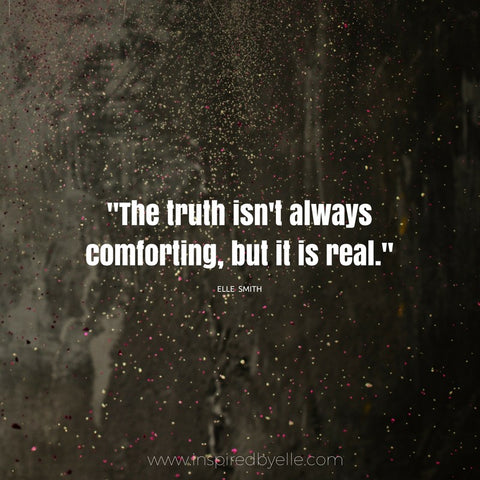Creative Art in the Age of a Few Good Men
Creative Art In The Age Of A Few Good Men

A Few Good Men, what does it mean in this era of Harvey Weinstein? If the news of recent weeks has told us anything, it’s that power is in the hands of men. Male, white men. A few, yes. Good? Well, that’s truly questionable.
Last night I sat down to watch the 1992 film classic, ‘A Few Good Men’, starring Tom Cruise and Jack Nicholson. For many of the actors involved, this film was a springboard launching their careers into meteoric stardom.
For me this was one of Tom Cruise’s defining movies. It has a captivating storyline, brilliant acting and a profound message. The script contains many lines, which resonate in view of recent current events.
“You can’t handle the truth.”
“We were supposed to fight for the people who cannot fight for themselves.”
“You don’t have to have a patch on your arm to have honour.”
These quotes sound simplistic, but they strike at the heart of human meaning. We can glorify films like ‘A Few Good Men’ and admire the macho sentiments. At the same time we often overlook our own flaws and the less than perfect paths our lives take.
“You Can’t Handle The Truth”
Lately, we seem to have an issue with truth. Whistleblowers are vilified for telling the truth. Distortion of the truth has become accepted. Fake news is a fact of life. And because no-one can handle the truth anymore, those who attempt to expose it are ridiculed.
Truth has fallen out of favour, replaced by mistruths and half-truths. But any shift from truth destroys its validity in an instant. Imagine you purchased a Rembrandt for a hefty price, and shortly after noticed a minor flaw which brings its authenticity into doubt. You question the dealer, who replies that your purchase is almost a ‘Rembrandt’ because it was painted by a member of the painter’s family. Clearly, you would not be satisfied with this half-truth.
Yet, in everyday matters we can’t seem to handle the truth. Whether this is a result of desensitization by the Media, it’s hard to say. As humans we have the ability to rise above primordial instincts and use our higher intellect to reason and challenge falsehoods.
Every day you encounter so many people happy to live their lives as a lie. Life in such a bubble can only ever be short-lived. At some point you must emerge from your prison of deceit. Falsehoods are hard to maintain, and as they increase in number the effort required to defy their existence becomes exponential.
Humans are endowed with a conscience, enabling us to make superior decisions. We have defined rules of morality. We can do better than accept the sad existence which comes with living a lie. Trying to preserve a sub reality of falsehoods has a cost. Humans need to feel happy and unburdened by conscience to lead satisfying lives. Today, this is common knowledge in the medical profession. Happiness does factor into our life expectancy, and a lack of it can impact our health in many ways.
Truth does not bestow happiness, however there is a distinct connection. It is clear that we feel less burdened if we exist in a honest and real environment. Dishonesty carries weight, which tends to be cumulative, if even the burden is escaped in the short-term.
People regularly deny the truth which is around them. They believe they can cope with the consequences. Meanwhile their stress levels increase and they shed layers of their soul. Looking around us, can anyone honestly say that despite the material gains of the 21st Century, the population is happy? I believe the reality shows us instead that the world has reached a nadir in human contentment. People feel an almost constant anxiety, which can outbalance the joy we should be experiencing in life.
We can centre our lives in truth again by studying the remarkable examples of nature and creativity that surround us. Nothing created in nature is inspired by a lie; evolution follows distinct, unvarying principles. The results are simple, but often breathtakingly beautiful and ground our souls in truth. The same can be said of fine art, which often reflects nature, philosophy and mankind’s hopes. The best, most profound art cannot be sourced in deceit. Thus art is therapy for the soul.
“We were supposed to fight for the people who cannot fight for themselves.”
Many years ago a friend warned me that my generation would be the last caring generation. I strongly disagreed, but, much to my disappointment I am now eating my words.
What is it today that we really care about? Well our houses for one, the cars we drive and other material possessions. All these things are made from mineral; they’re not living or breathing, but we often seem to hold them dearest to our hearts.
Take the recent shocking example of the man who left a note on an ambulance windscreen. While paramedics were trying to save someone’s life, he was more concerned with the blocking of his drive. These notes are not untypical, according to ambulance crews.
Why are some people so obsessed with their immediate environment – especially their homes – that they are blind to others’ peril? Could it be modern marketing strategies?
From the moment they wake up the general population is bombarded with consumer images. At first the prime offenders were TV commercials. At least you could avoid these by making a cup of tea. Nowadays we have a far more insidious intrusion of marketing images via the Internet. Not only are we force fed advertisements based on our Google searches, but we are profiled and nudged along like rats. There’s no ‘making the tea’ opt-out with the Internet. We are lured to the Google page by the promise of free searches but end up paying for them anyway with our privacy and freedom. This bombardment of digital consumer images risks turning millions into zombie marketing fodder. As we lurch ragged and twisted towards an unknown future, futilely trying to meet our need for the glittery stuff we lose sight of what’s important. Trapped in our zombie march we leave our real lives behind.
We leave behind nature. We leave behind art. We leave behind truth.
If we can’t see the beauty that surrounds us every day in nature and art, it’s not surprising we lose the ability to care. How can you care about a digital image? Especially when it’s one in thousands, or when it shows a smartphone upgrade a shade different from last year’s.
We need to get back to nature and art, as a way of getting back our lives. We need to call halt, or at least pause, on the technological revolution until our feelings and emotions catch up. Fine art reflects human nature, the human condition whether it be joy or pain, poverty or freedom. Digital images reflect plastic and brushed aluminium, unattainable ideals.
If we can reconnect through the great works of art, and jumpstart our creativity, we can start caring about what really matters. Not Mammon, but other people. Our family, our friends, our neighbours, people less fortunate than us. In doing so we will not only grow into good individuals, but our lives will become enriched.
“You don’t have to have a patch on your arm to have honour.”

Sometimes we find it hard to look beyond the clothes people are wearing. This is never so true than with people in authority. A crisp suit and tie always confers respect and sets lawyers, financiers and politicians apart. Men of uniform, including policemen and the army personnel in ‘A Few Good Men’ draw even more respect, awe too. These men and women put their lives on the line in the course of their duty. They not only have authority and power, they have honour too. Sometimes as with the Jack Nicholson character, they wear a merited patch to prove their honour. But we only have to recall scandals caused by people in authority to understand that a uniform is no guarantee of honourable behaviour. These scandals have included PPI (Payment Protection Insurance), MPs' expenses, phone hacking and, more recently, sexual harassment. The overwhelming majority will behave honourably and discharge their duties bravely, but there will always be a few who don’t.
How should the artist display honour? The only patch he is likely to wear is one holding his work shirt together. The artist can work with honour by always painting the truth. Either the truth in nature and life, which is revealed to him, or the truth that lies deep within his heart.
Conclusions
The number of 'good' people is sadly in decline in our society. We live in times where situations seem upside down in terms of acceptable behaviour and moral code. Creative art inspires us to firstly think, but moreover to reflect as well as escape from the treadmill lifestyle. It is in these moments that we can truly breathe, and moreover breathe new life into our soul.
This movie is deeply emotive on many levels as we watch the story unfold, there in the perception of strength and fragility. Equally the corruption of power in different characters, highlighting those who hold strong morals at their core and how this eventually grounds them.
We can all aspire to be one of those few good men, by allowing creativity into our lives. Maybe one day soon that number will then return to many good men.
Leave a comment
Comments will be approved before showing up.



